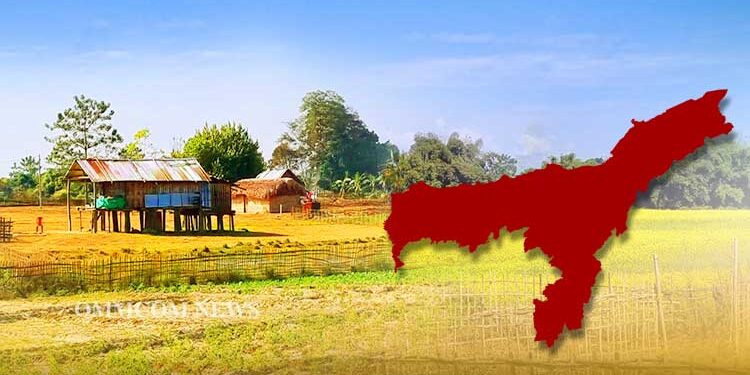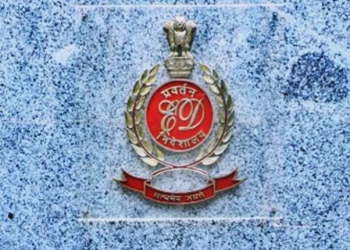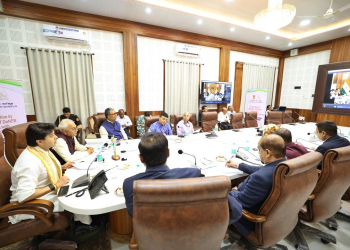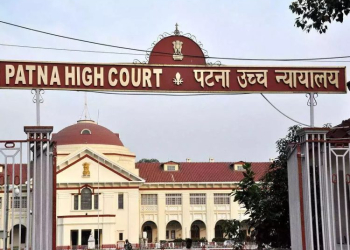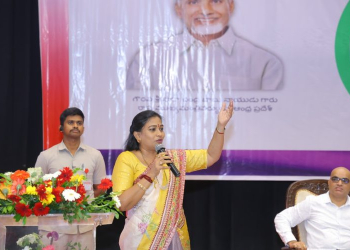Dhemaji (Assam): Deep Hajong of Azarbari village in Dhemaji district of Assam was a minor when he first left his house and travelled to Chennai in search of a job. He kept migrating to different cities in the south but returned during the Covid-19 pandemic in 2020. He is mulling over the prospects of returning once again this year.
“If I had a choice, I would have stayed back with my family. Unfortunately, we don’t have a lot of livelihood opportunities here,” he says.
Deep’s fellow villager Chandra Hajong, who accompanied him to Chennai, is also wary of finding work in his district.
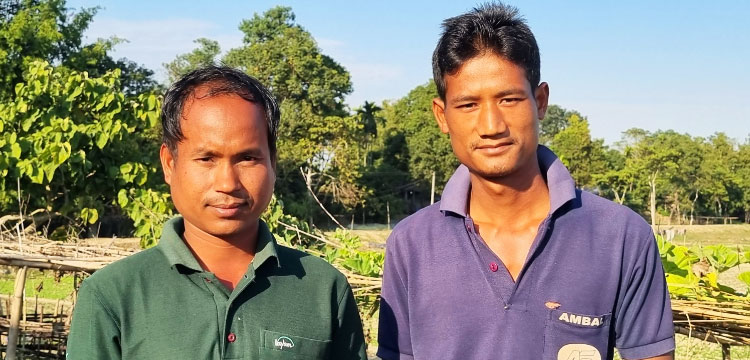
“Agriculture has become a huge risk now. The rains have become unpredictable, increasing the chances of a poor harvest. So, the safest option is to engage in a salaried or a daily wage job,” he says.
For most of the residents of 270-odd villages in the Dhemaji district, seasonal migration has become a norm. Agriculture, their primary livelihood source, is no longer a viable option due to the recurrent floods.
With a population of close to 6.86 lahks with mostly people from the indigenous communities, Dhemaji district is one of the worst flood-affected districts in Assam. According to the CEEW 2021 report, it is ranked first among the climate-vulnerable districts in the country.
Flood has become almost an annual affair, and as high as 60 per cent of the district remains inundated from June onwards. The floods have prompted seasonal migration in the region, with the youth moving out in the monsoon and returning to their villages after the flood water recedes.
“The floods almost coincide with the harvest season, which makes it difficult for the crops to survive. By the time the water recedes the agriculture season also ends. With no other option, the youth move out to the southern states for jobs,” says Lal Bahadur Chettri, who is associated with the village panchayat in Ajarbari.
The condition is similar in other panchayats. In Sile Panchayat, for instance, which borders Arunachal Pradesh, the devastating floods of 2020 changed the lifestyle of the people.
Hem Kumar Rai, a panchayat member of Sile GP, lost his house and farmland in 2020 when the floodwater swept away a part of the village. He now stays in a house he built on a fellow villagers’ land and survives from the money his 25-year-old son sends while working as a daily wage labourer in neighbouring Arunachal Pradesh.
“I had seen several floods in my lifetime, but the one in 2020 was unlike any other. I saw my house swept away in front of me. A local school and a temple were also washed away. We do have a kitchen garden now, but we need money for sustenance. My son works in a road construction project in Arunachal Pradesh as a daily wage labourer and earns Rs 400 per day,” he says.
The floods are also prompting a shift in agriculture. Paddy, which is the main crop in the region, is no longer a viable option. This, in turn, has led to the farmers switching over to cash crops like mustard and potato, in a hope that they would reap monetary gains.
“The problem with some cash crops is that the water requirement is slightly high for some of them. But, we are still hoping that we will be able to earn enough to sustain our family. If it happens, I no longer have to move out of my village for a job,” Deep says.
By Tazeen Qureshy


